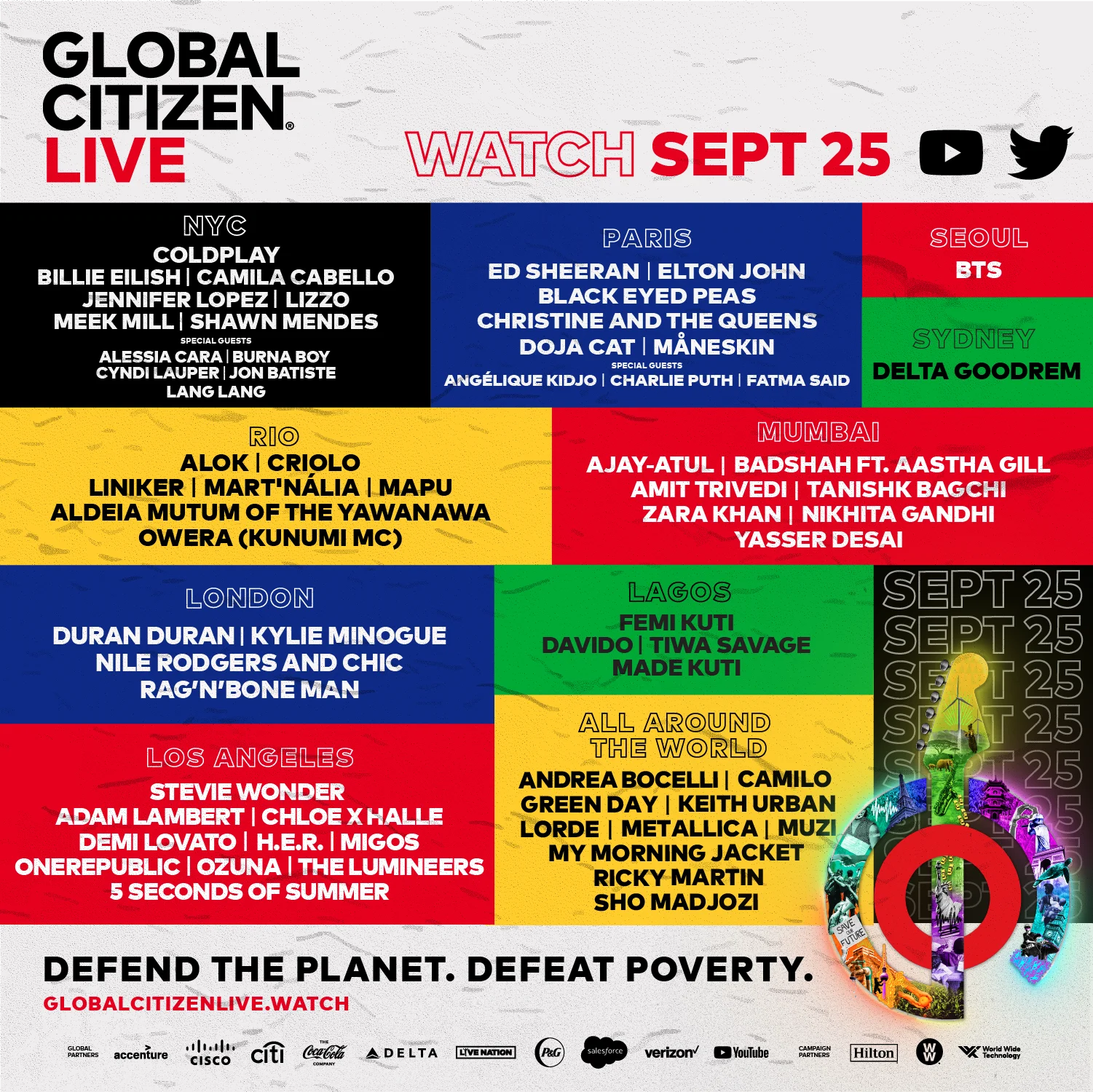This week, the UN General Assembly gathers all 193 member nations to tackle the world’s most pressing issues, with climate change at the top of the list. As world leaders struggle to take decisive action to lower our global greenhouse gas emissions, we can’t help but wonder what the coming years on earth will look like.
Option A: A desert landscape, where crops buckle under oppressive heat and entire species of animals die off one by one until biodiversity becomes nonexistent.
Option B: The world in all its rich, luscious glory, with trees spread across every country and steady rainfall maintaining our food systems so everyone has enough to eat.
Which future will we choose? This is the question posed by American artist Will Kurtz, who worked with Global Citizen to launch an installation art piece in New York’s Time Square this week ahead of Global Citizen Live, our once-in-a-generation, 24-hour global broadcast event on Saturday, Sept. 25.
At the center of NYC’s concrete jungle, Global Citizens will stumble across another sort of forest, constructed from the items that populate our lives. Newspaper, cardboard, and plastic bags become four different types of trees in Kurtz’s vision for the future of the living world.
Kurtz told Global Citizen that working with manmade materials felt like a natural part of his process for this installation.
“I used to be a landscape architect for 25 years before I switched over to sculpture, so I know trees,” Kurtz said. “And I’m really big into the environment, so anytime I can recycle something, it’s really important to me. Newspapers — there’s so much waste. If I can take some of that waste and turn it into fine art, I really love doing that.”
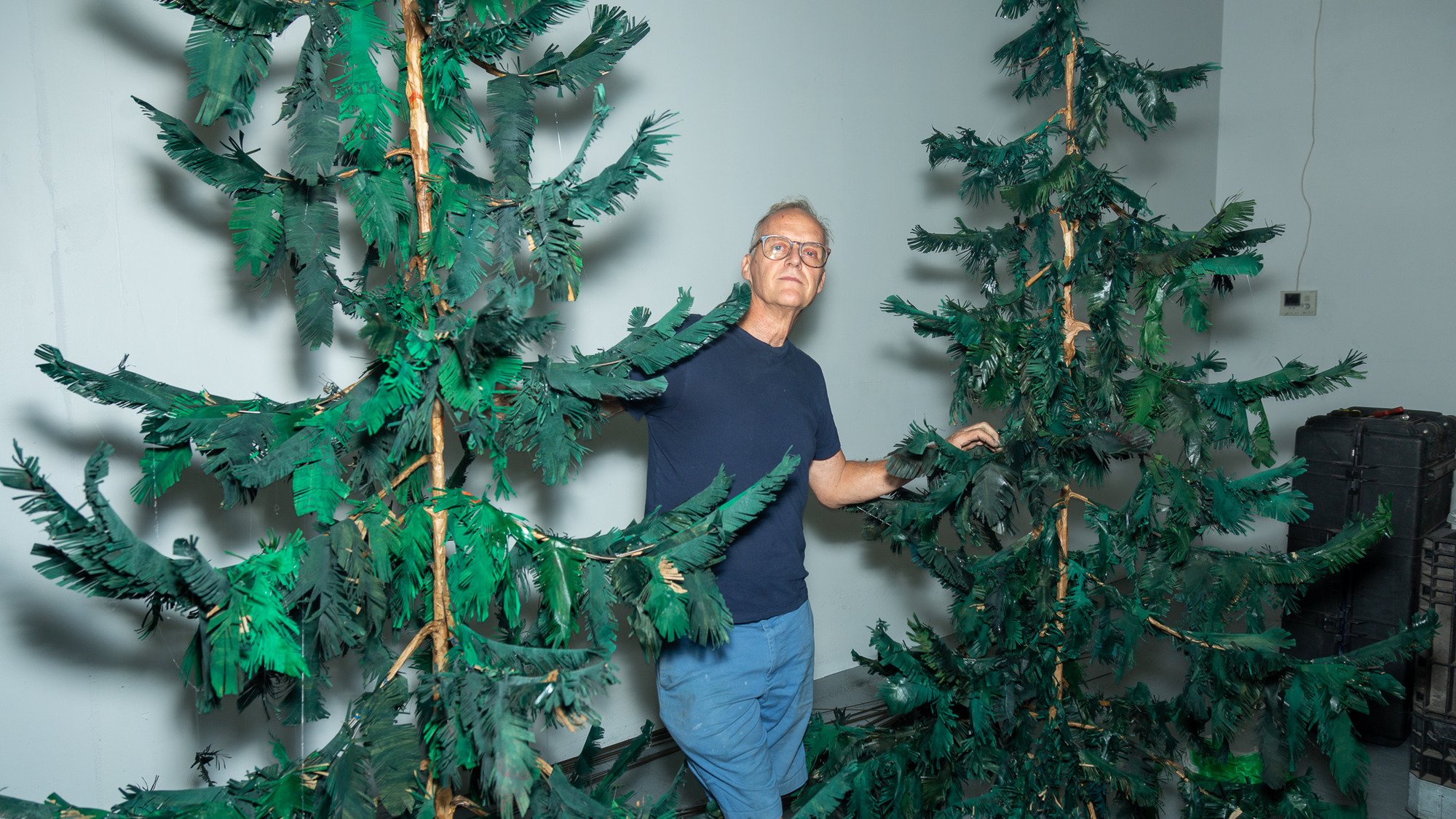
Viewers who walk up to the public art piece will first observe several tree stumps, carved out of cardboard to resemble the unique texture of bark. Pasted on the surface of these stumps are alarming facts, like how a quarter of the world’s population relies on forests for their livelihoods, and that many valuable ecosystems and species will be lost if global temperatures rise by 2.9 degrees Celsius.
The stumps not only spell out the threats of climate change, but also serve as a visual reminder of humans’ impact on the environment: In the United States alone, we’ve already lost 75% of the country’s virgin forests, and are poised to lose more if we don't take action.
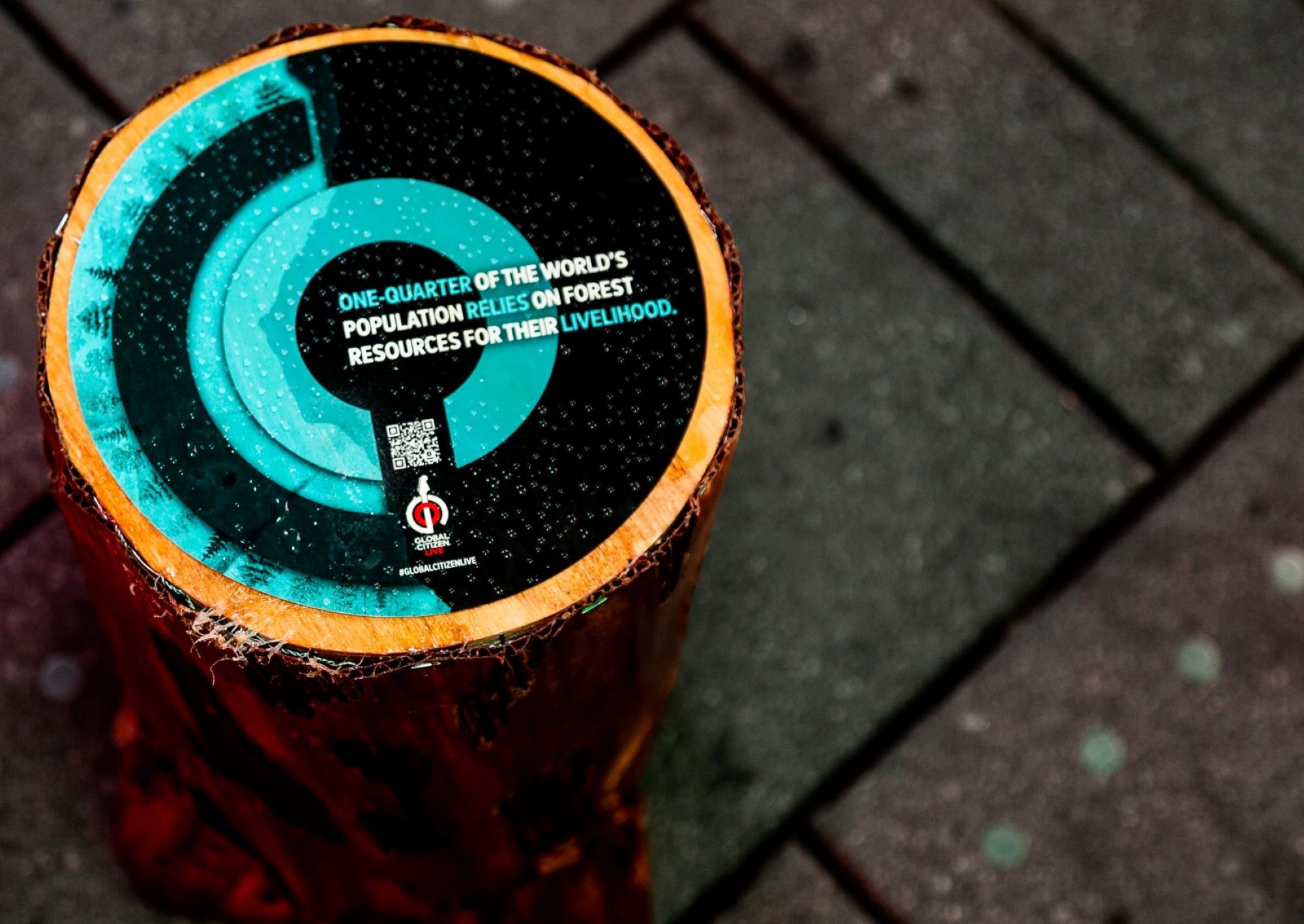
Losing our planet's forests has massive consequences. Deforestation efforts not only limit the amount of carbon dioxide sequestered from the atmosphere by trees, but they have also contributed to the planet’s sixth mass extinction of plant and animal species. If these facts about climate change weren’t enough, we also have to worry about the increasing threat of food insecurity and natural disasters, which claim more lives each year.
But amid the flurry of climate anxiety that arises whenever we are presented with the realities of global warming, Kurtz reminds us of one of our greatest tools in the fight to defend the planet: hope.
Within an enclosure of foreboding tree stumps, several trees stand unharmed, crafted from steel frames and wrapped in plastic bags and newspaper. Bundles of paper leaves — stained purple, pink, and green — hang from these makeshift branches to resemble magnolia, white birch, evergreen, and live oak trees.
“[The climate crisis] is a huge thing, so sometimes I get to the point where I’m like, why am I making art? And I think a lot of people feel that way,” Kurtz said. “But there is still hope. I got this project and found out it can help plant a billion trees, maybe a trillion trees, and I’m so happy to be a part of that.”
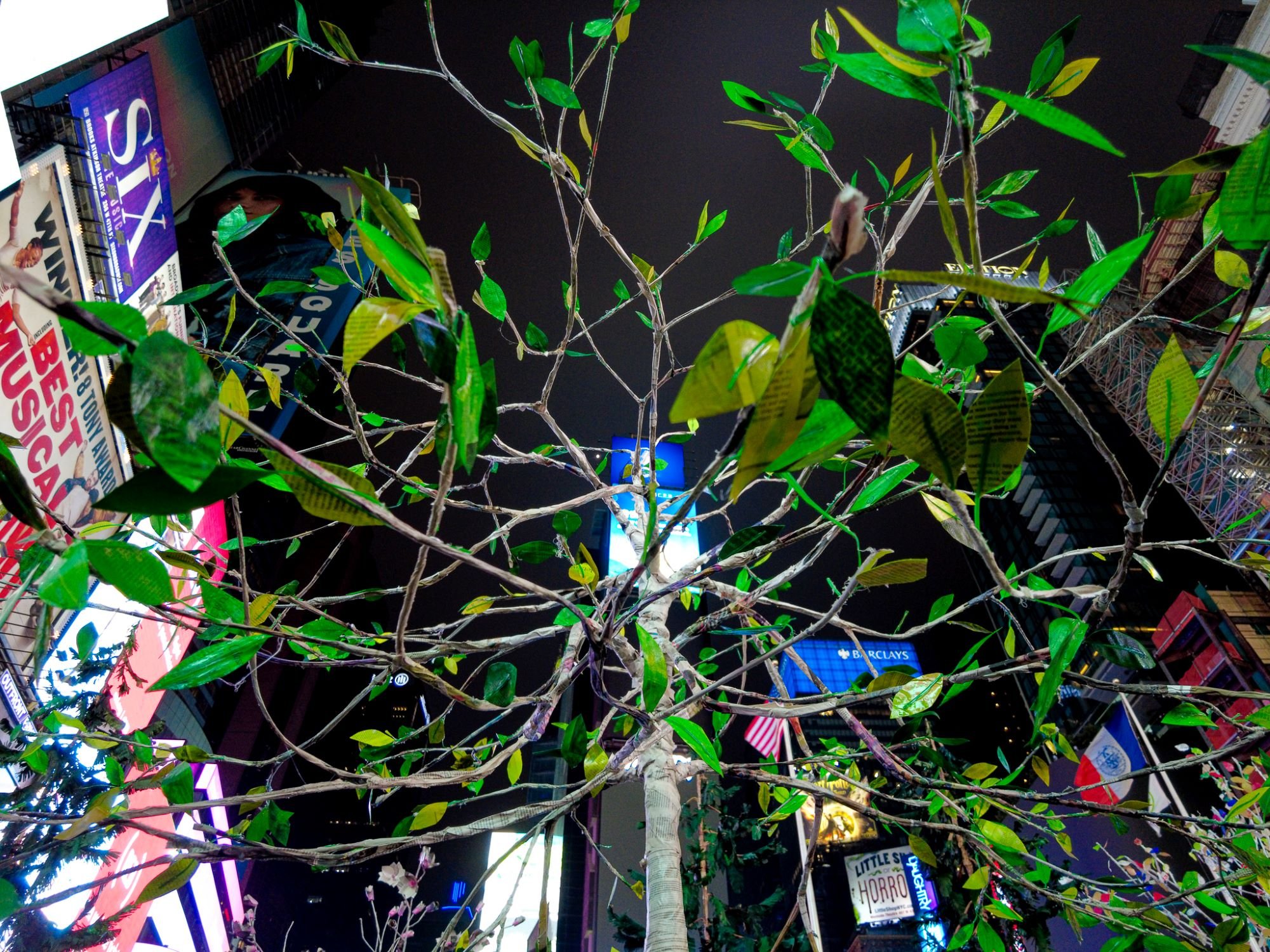
When there are seemingly endless climate reports being published, it is natural to become numb to the threat of climate change. When our governments and corporations care more about greenwashing than reducing their carbon emissions, it makes sense that we feel hopeless.
The beauty of art is that it can engage us on important issues by presenting them in a new way, stirring up our emotions so that we want to take action. But in order to be effective, we have to actually do something.
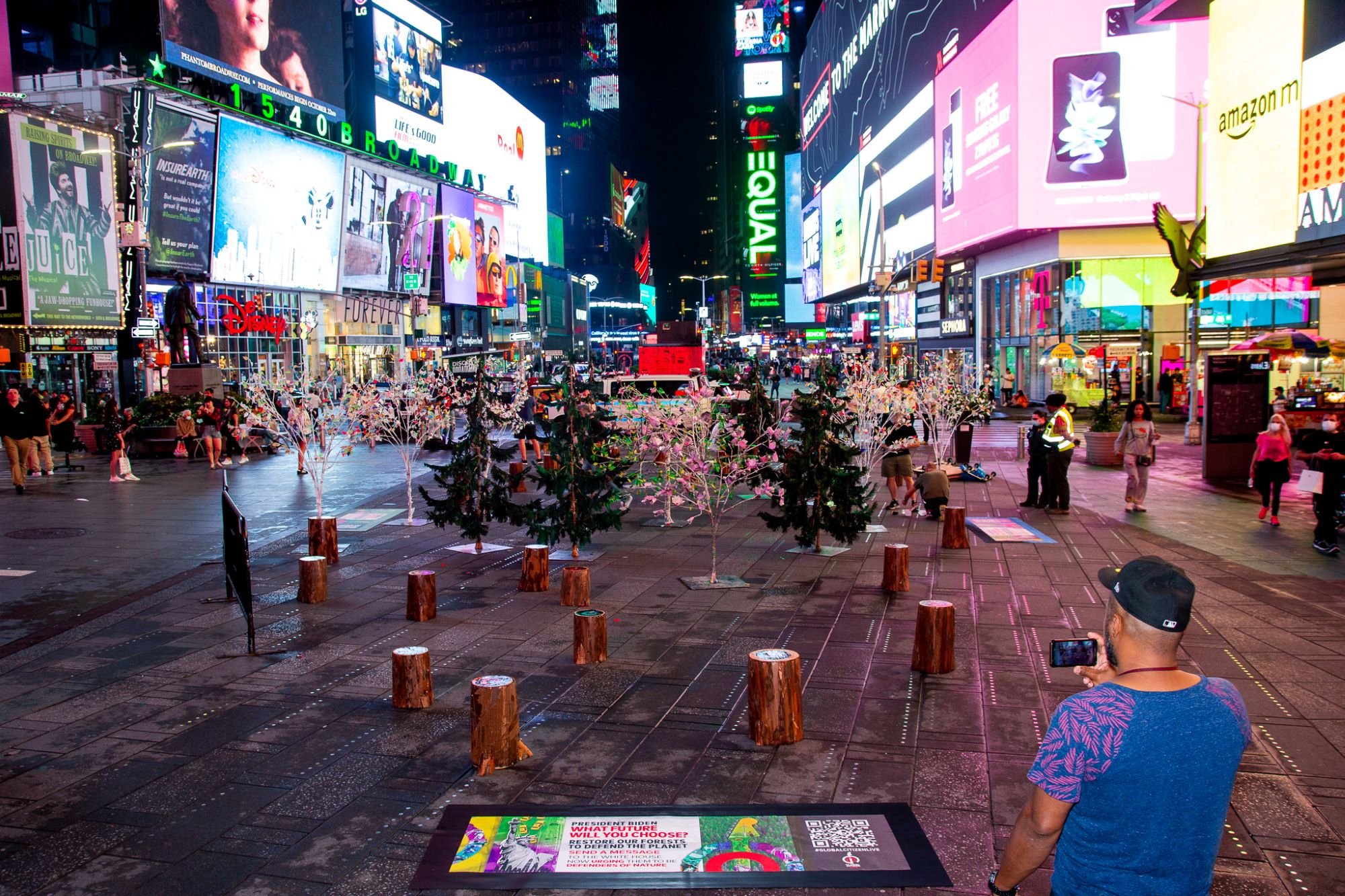
As one of the wealthiest countries in the world, the United States has the ability to reforest its lost tree coverage — and support tree planting initiatives around the world. That’s why Global Citizen is including a QR code on top of the tree stumps to direct visitors to our website, where they can demand that the Biden administration commits to protecting 1 billion trees globally and planting 1 billion trees domestically by 2030.
In the lead-up to Global Citizen Live on Saturday, Sept. 25, we’re asking people everywhere to be part of the fight to defend our planet.
While the very real and imminent threat of climate change can make it seem like our future is predetermined, it’s not. Kurtz’s What Future Will We Choose? installation shows us that we can acknowledge what we have done to the world around us, but also take action to prevent any more loss from taking place. We just have to start.
“First, you’re going to see all of these stumps, which are very stark, and then you’re going to see these trees being vibrant and lively and beautiful,” Kurtz said. “There’s this contrast of terrifying climate change that you can’t do anything about, but wait: Maybe you can do something. Planting these trees, that’s something. I want people to know there’s something.”
What Future Will We Choose? will run in Times Square on Broadway between 46th and 47th Streets on Wednesday, Sept. 22, and Thursday, Sept. 23.
You can join the Global Citizen Live campaign to defend the planet and defeat poverty by taking action here, and become part of a movement powered by citizens around the world who are taking action together with governments, corporations, and philanthropists to make change.
